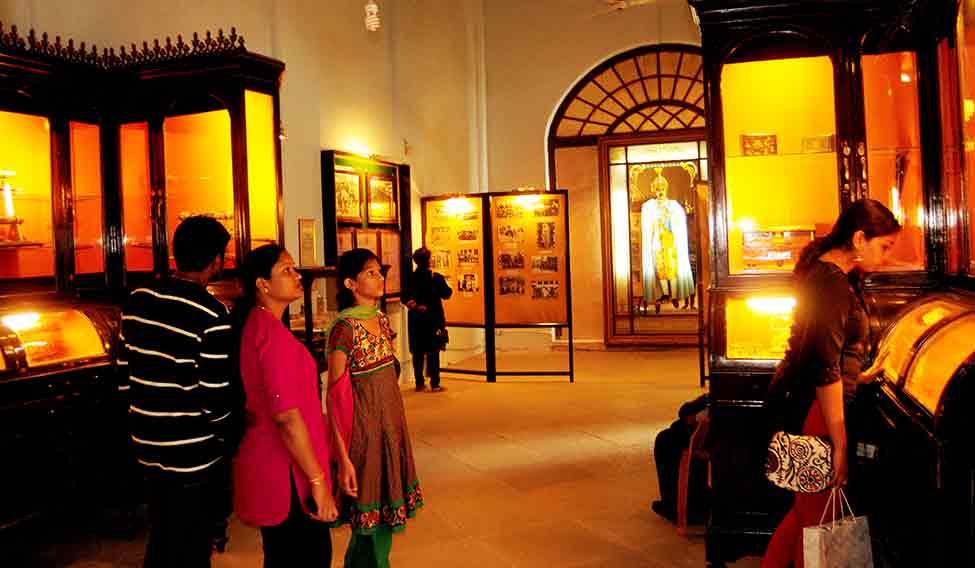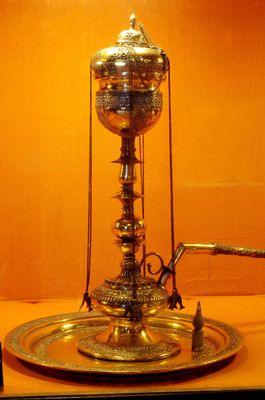There are several bakeries around the Purani Haveli in Hyderabad that make the famous soft, flaky naans. The air here is always redolent with the smell of freshly baked bread. But that is not the only attraction of the area. The Purani Haveli is a treasure trove for history lovers.
The haveli was built in 1777 by Mir Nizam Ali Khan, the second Nizam of the Asaf Jah dynasty, for his son, Sikander Jah. It showcases the royal relics of the seven Nizams, who ruled between 1724 and 1948. Built to resemble the Palace of Versailles in France, the haveli initially comprised a main building, flanked by two wings that run parallel to each other. The H.E.H. [His Exalted Highness] Nizam's Museum and the wardrobe, belonging to Mir Mahbub Ali Khan, the sixth Nizam, are located in one of the wings. Today, however, more than ten buildings, including Princess Esin Women's Educational Centre, Princess Durru Shehvar Children's and General Hospital and Mukarram Jah Junior College, have come up on the haveli grounds.
 visitors at the Nizam's Musuem
visitors at the Nizam's Musuem
Most people think that the Salar Jung Museum—which has a collection of artefacts acquired by Nawab Mir Yousuf Ali Khan—best showcases the history of Hyderabad. However, one visit to the Nizam's Museum would change that perception. “The museum houses gifts, mementos, and other presentation articles given to the seventh Nizam [Mir Osman Ali Khan] on the completion of 25 years of his reign. Though he completed 25 years in 1936, the function was held in 1937 which is when the gifts were received,” says Dr D. Bhaskara Rao, chief curator of the Nizam’s Museum.
So, one would find a jewellery box studded with pearls, a dagger with an ivory handle encased in a golden sheath and a gold tiffin box with knobs and rings studded with diamonds at the museum, which was opened for the public in February 2000.
 an ornate hookah
an ornate hookah
Another key attraction in the haveli is the 150-year-old hand-cranked wooden lift, which can go up to the second floor. Though not in perfect condition, the lift is still functional and is put to use on certain occasions.
While the museum is located on the first floor, the walk-in wardrobe of the sixth Nizam is on the second floor. Made from the finest Burma teak, the 176ft-long wardrobe is believed to be the longest walk-in wardrobe in the world. It has been constructed on two levels, with small windows in between and a few mirrors.
The wardrobe, however, has very few items from the Nizam's collection—just a sherwani and a few hunting boots. Wonder why? The Nizam was reportedly a vain man, who never repeated a costume. He was also wary of copycats. So, whenever he went shopping, he would buy the entire collection of fabrics he liked. The unused fabrics would be stored in the wooden shelves above the main wardrobe, along with his collections of caps and hats, perfumes and other accessories. Later, he would either destroy the fabrics and costumes or give them away. Apparently, he wore both traditional and western clothes. With no sample available, a recreation of his clothes was attempted based on his photographs by Lakshmi Devi Raj, revivalist of Kalamkari and Venkatagiri saris.
Though vain, the sixth Nizam was a great ruler; there are stories of him venturing out of the palace in disguise and meeting common people to understand their needs.
The Nizam's museum is not just a collection of mere artefact but a recollection of many such stories.







